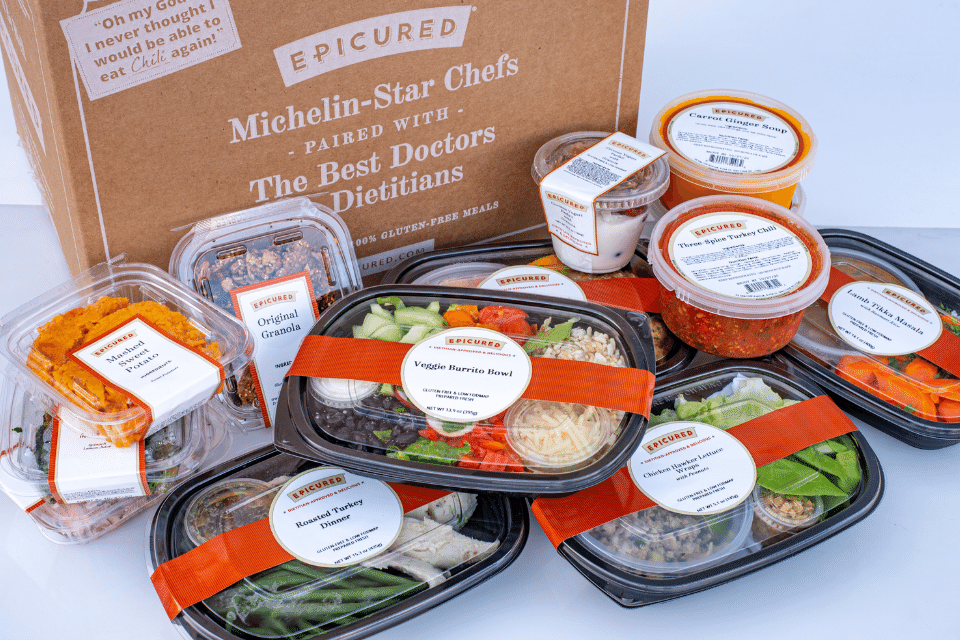Many people struggle to eat enough nutrient-dense foods and maintain a high enough caloric intake when attempting a low FODMAP diet on their own. There are several reasons for this.
Some examples are:
• Over-restricting food intake for fear of eating foods that may trigger symptoms, resulting in weight loss from not eating enough which sends your body into starvation mode.
• Having high-calorie needs due to size – people with a heavier bodyweight need to eat many calories.
• Having a high-energy expenditure, high muscle mass, or high metabolism due to physical activity can put people at risk for excessive weight loss – Athletes, people who engage in vigorous recreational activities, and those who have a physically demanding job need to eat a higher-calorie diet.
Seeking the help of a registered dietitian trained in the Low FODMAP Diet to monitor your calorie intake is ideal if you struggle to eat enough and have resulting issues with weight loss.
The good news is that there are many low FODMAP foods that one can eat to ensure that they are eating enough nutrient-dense foods and to ensure they meet their daily calorie needs. Here are a few tips:
1. Eat Regular Meals and Snacks.
Don’t skip meals! Make all meals count by eating high-calorie foods that pack more punch for their volume. If you miss a meal or snack, you may be hungrier at the next meal and end up eating too many FODMAPs, which may lead to bloating or other GI symptoms. Think of snacks as “mini-meals” rather than eating processed foods like chips or bars. This is especially important if you do a lot of physical activity and want to ensure you’re eating enough calories to avoid a calorie deficit. Plan some pre and post-workout snacks to eat to make sure you get enough calories. Some examples are:
• Brown rice cakes with peanut butter
• Lactose-free yogurt with low FODMAP fruit
• Or try some of Epicured’s low FODMAP snacks, such as the Mocha Espresso Energy Bites or the Original Granola.
2. Eat larger portions of protein-rich foods.
Unless you have a health issue that requires you to limit your protein intake (for example, kidney disease), you can eat bigger portions of high-protein foods (beef, pork, chicken, fish/seafood and eggs, tofu, or tempeh) to combat weight loss. If you’re an avid exerciser, are training for an event (such as a marathon or century ride), or do a lot of strength training, you may need to eat some additional protein to repair and rebuild your muscles. Try some of Epicured’s high-protein entrees, such as the Moroccan Tajine with Chicken (or Lamb/Tofu) or the Tofu Tikka Masala.
3. Add fat and high-fat foods to your diet.
Fats and oils are FODMAP-free and have 9 kilocalories per gram compared to carbohydrates and proteins, which have 4 kilocalories per gram. This means you get more calorie bang for your food buck when eating them. Use moderate amounts of oil or butter to cook and flavor your food. Despite being high calorie, eating high-fat meals may indeed trigger symptoms in some people. But there’s a difference between eating deep-fried foods or fast foods (such as a burger topped with cheese and a side of french fries) and using modest amounts of oil to flavor your food to ensure you get enough calories that include healthy fat.
Don’t forget to include some low-FODMAP servings or high-fat, high calorie foods:
• Nuts and nut butters – most nuts (except cashews and pistachios) and peanut or almond butter
• Cheese – Some types are virtually lactose-free: think aged cheeses like parmesan, cheddar, brie, and others.
4. Eat larger portions of low-FODMAP grains and starches.
Rice, millet, and quinoa make great low FODMAP side dishes to any meal. Potatoes (yellow or red, not the sweet varieties) are virtually FODMAP-free. You can roast them or make a potato salad. Enjoy eating corn tortillas for tacos or fajitas. Try Epicured Herbed Quinoa or Rosemary Whipped Potatoes.


